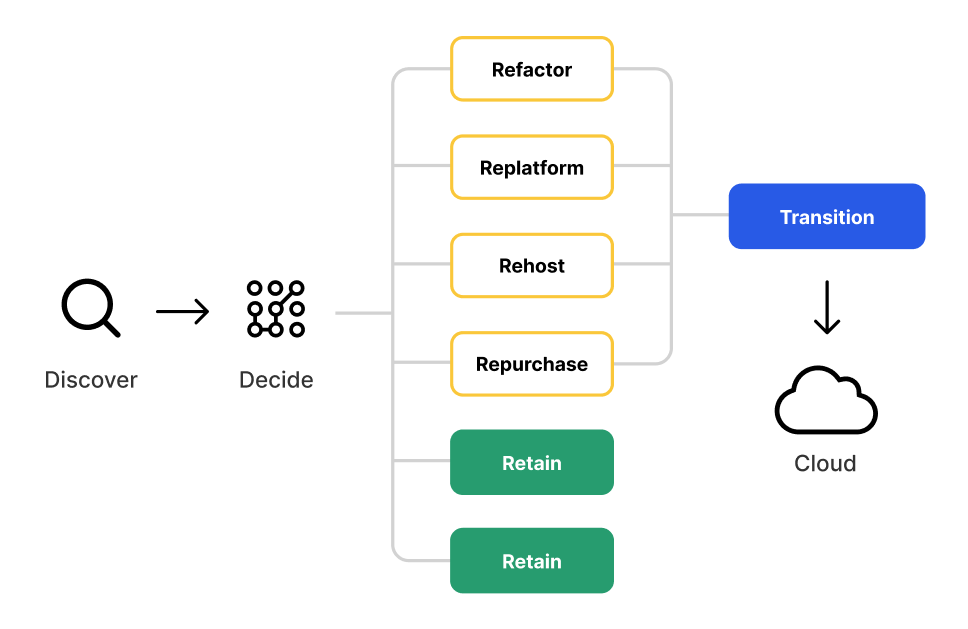Cloud migration, the process of moving data, applications, and other digital resources from on-premises infrastructure to cloud environments, can offer organizations unparalleled advantages in terms of operational efficiency, cost savings, and business agility. However, a successful migration is contingent on thoughtful preparation and meticulous execution.
As businesses recognize these potential benefits, the rush to migrate is palpable. But, haste without a proper plan or knowledge can lead to complications, unnecessary expenses, and potential data breaches. Hence, it’s paramount to understand the nuances of cloud migration and how to ensure a seamless transition.

Step 1: Understand Your Migration Goals
Before diving into the migration process, it’s vital to comprehend why the organization is migrating in the first place. Identify the needs and challenges of the current infrastructure. Is the goal to achieve cost savings, scalability, or better performance?
Determining the potential return on investment (ROI) from the migration justifies the expenses and resources allocated. As such, clear goals provide a roadmap, setting benchmarks for what a successful migration looks like.
Ensuring all stakeholders are on board is equally crucial. When everyone shares a vision, it minimizes resistance and ensures smoother decision-making and execution.
Step 2: Conduct A Thorough Assessment
An initial assessment of the existing infrastructure and applications lays the groundwork. Inventorying existing applications, data, and infrastructure components provides clarity on the scale of the migration and is crucial for resource planning.
Prioritizing what to migrate based on business criticality can help streamline the process and reduce downtime or disruptions. This prioritization ensures that essential services remain available throughout the transition.
By identifying potential challenges or incompatibilities early on, organizations can devise strategies to address them proactively, preventing unexpected roadblocks later in the process.
Step 3: Implement A Cyber Security Risk Assessment
The digital landscape is fraught with potential threats, making a cyber security risk assessment paramount. Begin by identifying vulnerabilities in the current infrastructure. This knowledge ensures that existing weaknesses are not carried into the new cloud environment.
When choosing the right cloud MSP, scrutinize their security measures. Ensure that the chosen provider aligns with the company’s security standards and meets industry regulations. A cloud provider’s security pedigree can offer peace of mind during the transition.
Training is the last piece of this puzzle. By informing and training employees on new security protocols, the organization can fortify its defenses and reduce the risk of breaches.
Step 4: Choose The Right Cloud Service Model
There’s no one-size-fits-all in cloud services. Different businesses have different needs, and it’s vital to understand the distinctions between infrastructure as a service (IaaS), platform as a service (PaaS), and software as a service (SaaS).
Considering future scalability and flexibility is paramount. While immediate needs are important, choose a service model that can grow with the business. This foresight prevents costly restructuring in the future.
Lastly, align the chosen service model with the organization’s in-house technical expertise. This alignment ensures that the team can manage, troubleshoot, and optimize the cloud resources without constantly relying on external help.
Step 5: Plan The Migration Process
A well-laid plan is the backbone of any successful migration. By segmenting the migration into manageable phases, organizations can ensure that each step is meticulously executed and tested.
More importantly, resource allocation should be well-balanced. It’s essential to ensure there are dedicated teams overseeing different facets of the migration. These teams can swiftly address any hiccups, ensuring continuity of operations.
Establishing a clear timeline with milestones provides accountability. This structure not only keeps the migration process on track but also ensures transparency with stakeholders.
Step 6: Leverage Migration Tools And Services
Many cloud providers offer specialized tools and services to facilitate and streamline migration. Familiarizing with these tools can significantly simplify the transition process. They can automate many tasks, reduce manual errors, and expedite the overall migration.
Before selecting any tool, evaluate its compatibility with the existing infrastructure and its capabilities. Ensure it aligns with the migration goals and can handle the organization’s specific requirements.
Incorporate training sessions for the team responsible for the migration. Understanding how to efficiently use these tools can further enhance the smoothness of the transition and ensure that all the tool’s capabilities are fully harnessed.
Step 7: Run Reliable Tests
After migrating resources, it’s essential not to assume everything works seamlessly. Start by running tests that mimic real-world scenarios. Such tests provide insights into how the system will perform under stress.
Ensuring data integrity and application functionality post-migration is vital. Rigorous testing can highlight discrepancies, allowing for timely remediation.
Lastly, involve end-users in the testing process. Their day-to-day interaction with the migrated applications provides invaluable feedback. Their insights can guide fine-tuning and optimization efforts.
Step 8: Foster Clear Communication
Open channels of communication are paramount throughout the migration process. Keep all relevant teams and departments informed about the migration’s progress, upcoming changes, and potential downtimes. This transparency helps manage expectations and reduces the potential for friction.
Establish regular checkpoints or updates for stakeholders. Whether it’s a weekly briefing or a daily email update, these communications provide reassurance and ensure everyone is aligned on the migration’s progress and goals.
Lastly, consider setting up a dedicated portal or helpline where employees can seek assistance or report issues related to the migration. This proactive approach ensures that any challenges are swiftly addressed, minimizing disruptions.
Step 9: Prepare For Rollback Scenarios
Despite meticulous planning and execution, unforeseen challenges can arise during a migration. It’s essential to be prepared for scenarios where rolling back to the previous state becomes necessary.
Create comprehensive backups of all data and applications before initiating the migration. These backups are the safety nets, ensuring no data loss in rollback scenarios.
Document a clear rollback plan detailing the steps to revert to the original state. This plan should be easily accessible and understood by the migration team. Regular drills can ensure that if a rollback becomes necessary, the team can execute it promptly and efficiently.
Additionally, after each phase of the migration, assess the feasibility of continuing or the need for a rollback. By regularly gauging the migration’s success against predetermined benchmarks, informed decisions can be made on the fly.
Step 10: Monitor And Optimize Post-Migration
Continuous monitoring post-migration ensures that applications and infrastructure perform optimally. Regular checks can detect issues early, enabling prompt resolution.
Cloud environments can be dynamic in terms of cost. Regularly assessing and optimizing these costs ensures maximum return on investment, preventing any financial leakages.
Keeping an ear to the ground is also beneficial. Staying updated with the latest in cloud technologies and best practices helps businesses maintain a competitive edge and harness the full potential of their cloud infrastructure.
Conclusion
Successfully navigating a cloud migration is a multi-faceted endeavor, demanding both strategic foresight and meticulous attention to detail. From understanding core objectives and leveraging available tools to fostering open communication and preparing for uncertainties, each step is pivotal in shaping the migration journey.
By adopting a holistic approach as outlined in this guide, businesses can capitalize on the transformative potential of the cloud, driving operational excellence and future-ready growth.




